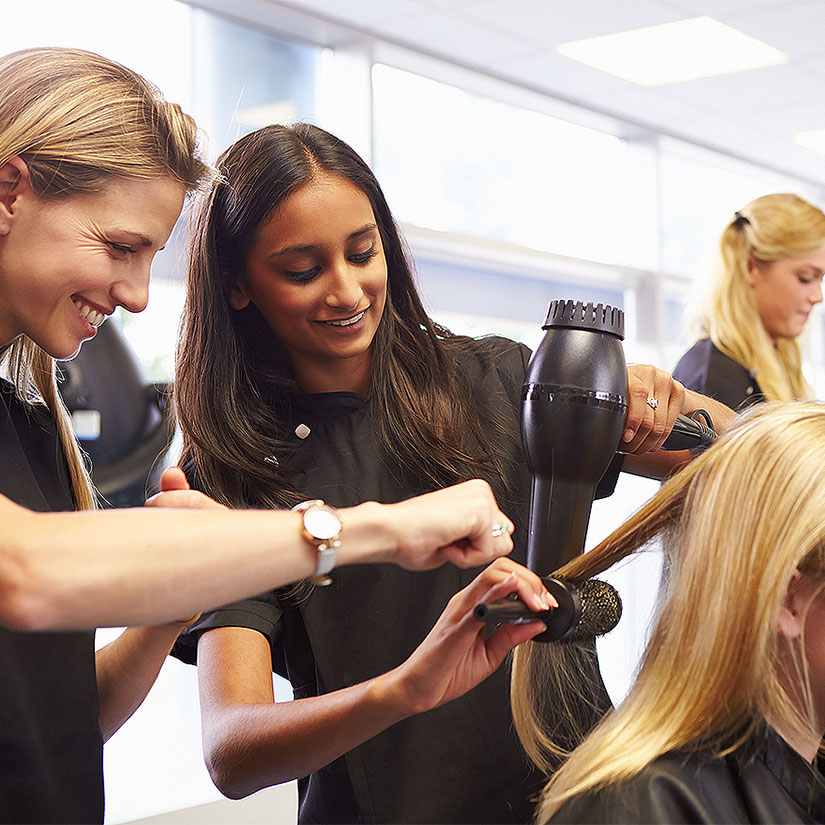In any industry, if you want to succeed, you typically need to know more about the history of that industry. Even if you’re not taking full history classes, knowing a little bit about an industry’s history can be immensely helpful in pushing you forward. The same holds true in the cosmetology industry. Here’s what you need to know about the history of highlights and lowlights.
What Are Highlights and Lowlights?
In simplest terms, highlights and lowlights change a person’s hair color. Most commonly, these terms are used when instead of entirely coloring someone’s hair, a person chooses to color only part of their hair. There are many additions to this process that can be an important part of how the end result turns out.
How Does Someone Achieve Highlights and Lowlights?
There are many different methods for achieving highlights and lowlights, but in the modern cosmetology era, you’ll typically find four common methods:
- Foil
- Hair painting/balayage
- Frosting
- Chunking
Foil is the traditional method, where hair is separated into multiple sections, hair color is painted onto hair, which is then wrapped in a foil and left to set. Hair painting is a more freestyle method, where the colorist paints the color directly onto the hair more freely than the technique used in foiling. Frosting tends to emphasize the contrast between the light and the dark, as though the light is “frozen” onto the dark. Chunking, sometimes called “chunky highlights,” creates large sections of prominent color on your hair, with the maximum contrast between light and dark.
What Types of Products Are Used?
It all depends on the result you want. Typically, there are four different dye options used, from most permanent to least permanent:
- Temporary
- Semi-permanent
- Demi-permanent
- Permanent
Highlights and Lowlights in Ancient Times
For centuries, people have used different techniques and formulas to color their hair.. As early as 4 B.C., the ancient Greeks were possibly trying to add highlights to their hair. A person would apply an ointment made of olive oil, pollen, and gold flakes to their hair, then sit in the sun for hours. This wasn’t very effective, but it was a technique used for many years.
By around 1400, people were starting to experiment with chemicals, and the same went for hair coloring. Someone would mix alum, honey, lemons, and sulfur together. This mixture was applied to hair with the use of a hat, to prevent product from sliding down hair. The sun, again, was used in this process to initiate the color transfer. Due to the addition of the sulfur and lemons, this was a bit more successful, but truly successful highlights and lowlights wouldn’t be invented for many centuries to come.
Highlights and Lowlights in Modern Times
In the early 1900s, modern highlight caps first got their use. These highlight caps would fit on a person’s head but had holes all over the cap. The cosmetologist would pull strands of hair through the caps, then dye them to prevent bleeding highlights. This is where hydrogen peroxide first comes into play as a method of hair dye, and it’s surprisingly effective.
The Great Depression and World War II both contributed to a downturn in hairstyling services, but around the 1960s, the hair cap returned. Though it was no longer “just a fad,” it created a very monochromatic, unnatural highlight style. However, in the 1980s, highlights truly exploded in popularity, and foils were introduced to allow people to place highlights anywhere they wanted. All methods of highlighting and lowlighting gained popularity during this time.
Conclusion
As you can see, the world of cosmetology is always growing and changing. Cosmetologists have certainly come a long way from mixing olive oil, pollen, and gold together and hoping it will do something to a person’s hair color. It’s a magical experience seeing the cosmetology world grow and change, and with the cosmetology program from Tricoci University of Beauty Culture, you get to see that happen in real-time. Sign up to get more information today and learn about how you can experience cosmetology more excitingly.





